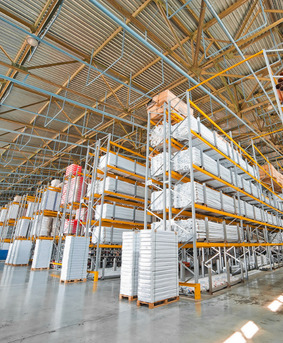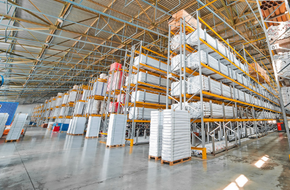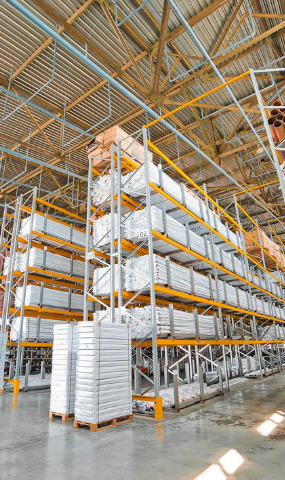Ukraine, the CIS and European countries.
WE PRODUCE QUALITY SANITARY
PRODUCTS FOR EFFICIENT HEATING,
WATER SUPPLY, SEWERAGE
SAN ТЕН RAI IS THE BIGGEST, HIGHLY AUTOMATED UKRAINIAN PRODUCTION
Ukraine
area
products per year
OUR PRODUCT IS ALREADY SOLD
IN 12 COUNTRIES AND IS A WORTHY
COMPETITION WITH EUROPEAN ANALOGUES
Lithuania, Georgia,
Kazakhstan, Uzbekistan, Mongolia,
Azerbaijan.
TO PROVE THE POINT,
WE INVITE TO PRODUCTION
Automated production
lines and modern technologies
part is reduced to a minimum - to
control over automation. This allows you
to achieve consistently high quality
WE USE HIGH-PRECISION
MODERN EQUIPMENT
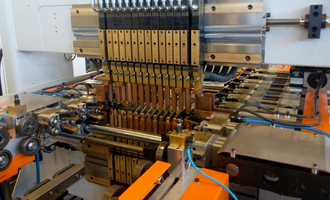


belling machines
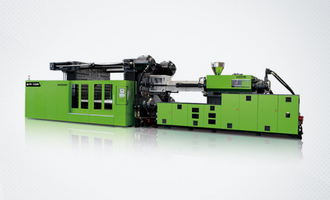
MULTI-LEVEL QUALITY CONTROL
SYSTEM, OWN CERTIFIED LABORATORIES
are tested in the laboratory. Products are
repeatedly tested at all stages of production
WE ARE DEVELOPING AND
EXPANDING THE PRODUCT LINE
AS A RESULT - HIGH SPEED
OF PRODUCTION AND
QUALITY OF PRODUCTS WITH
A GUARANTEE OF UP TO 50 YEARS
certified and insured
FAQ
-
Why is the radiator noisy?
Radiators themselves may not be the cause of noise. The townsfolk resort to rather radical methods: replacing radiators, overhauling them, etc. But, as it turns out later, such measures do not always get rid of noise. However, it can be argued that the sounds that have arisen in the heating system signal to us about the violation of the operating mode. First of all, let’s consider the possible causes of the noise and ways to eliminate it:
- The flow of the working medium that enters the batteries may be too intense. By nature, it resembles the sound of an ordinary tap when it is open. The turbulent force of the coolant flow is not a threat if you resort to installing a water pressure regulator. With it, you can set all the necessary parameters.
- Often noises indicate an air plug in the upper part of the radiator. Its sections may not be completely filled with water, so it will be easiest to release air or other gases. It is possible to do this manually, or equip the battery with an automatic valve if such problems occur with a regular frequency.
- Heating devices may resonate due to inappropriate pressure produced by the circulation pump. The fact is that pumps and pumping stations that are installed to ensure the flow of coolant can operate without meeting the planned performance and pressure indicators. In this case, read the instructions for setting up the pumping equipment in more detail, set the parameters of turnover, pressure and performance according to the requirements and capabilities of your system. For maximum confidence, experts recommend installing anti-vibration fittings between the pump and the pipes themselves.
- The most banal reason for the appearance of noise is the mismatch of the brackets with the points of support of heating devices. Therefore, the sounds of metal impacts during heating or cooling of the system are the consequences of uncompensated thermal expansion. But by putting rubber gaskets on the bracket, you will get rid of unwanted noise.
- In addition to physical reasons, noise can also cause incorrect technical calculations. When designing the heat supply system, certain freedom of movement during the thermal expansion of the metal could not be taken into account. As a result, noise is transmitted through the pipes to the heating devices themselves, accompanied by a characteristic tapping. The influence of thermal linear expansion of pipelines can be minimized with the help of a hidden gasket, insulation, inside which the movement of pipes will become free.
- Check the temperature control valve at the radiator, it may be incorrectly adjusted.
- Finally, the problem may well be hidden in the incorrect operation of the water heating boiler. According to the rules, its operation should last 20-40 minutes, followed by shutdown for more than an hour. Frequent switching on and off of the boiler indicates that the coolant flow is poorly regulated, and the radiators are not functioning at full capacity. The established norms state that the power of the boiler itself should not be more than 80% of the power of the heating batteries, since only in this case can the optimal operating mode of the system be guaranteed.
-
How to choose a radiator?
Steel panel Aluminum Bimetal Thermal conductivity average good excellent Power per section (W) 90-212 140-246 140-202 Service life (number of years) 10 15 25 Water hammer resistance medium low high Sensitivity to coolant quality high high low Limit temperature (°С) 110 120 120 Heating system central, autonomous autonomous central, autonomous The main requirements when choosing a radiator: it must keep a comfortable temperature (you need to calculate the number of sections correctly) and not leak, regardless of the water quality in the system. Before buying, read the equipment passport and warranty conditions. For autonomous heating, almost any type of radiator (panel or sectional) is suitable. In an apartment building, batteries are selected taking into account the technical features of the central heating system. For example, on the upper floors the pressure is low, the load is less. It is not easy to find out the quality of water, its preparation in the boiler room (except by evaluating old batteries on a slice). It is necessary to proceed from the worst option: they clean poorly and irregularly, the water is dirty, with impurities.
- It is considered uneconomical to install cast iron and steel panel radiators for an autonomous heating system. The first are heated for a long time, the second contain little water, more often you need to turn on the boiler.
- Steel tubular and aluminum radiators are not suitable for the central heating system, except that the conditions in it are ideal. The former are sensitive to water shocks. Such a radiator must be equipped with a gearbox to avoid a possible accident.
- Aluminum radiators do not withstand high pressure and water hammer. The solution may be the installation of conical shut-off valves, which allows you to gradually increase the pressure.
- Bimetallic batteries have the most advantages. Although they are slightly inferior to aluminum in terms of heat transfer. And the price for them is higher than for other options. Almost every modern model (even cast-iron radiators) can now be fitted with a heat regulator.
In any case, you should carefully familiarize yourself with the characteristics of the radiator specified in the technical data sheet and, based on the specific data and features of your heating system, make a choice.
The operating pressure specified in the passport must be at least 1.5 times the pressure in your heating system. For five-storey buildings, the average operating pressure is 6-8 atmospheres, for multi–storey buildings – 12-15 atmospheres.
-
What size radiator do you need?
Calculation formula – the area of the room is multiplied by 100 (the amount of heat per 1 m2) and divided by the heat output of one part of the radiator, indicated by the manufacturer.
For example: the area of the room is 22 m2, the heat transfer of one section of the radiator is 170 W.
22X100 / 170 = 12.9
You will need 13 radiator sections for this room.
When calculating, you must add 20% if the room has a balcony or is located at the end of the house. A battery installed in a niche will reduce heat transfer by 15%.
And in order to eliminate all possible errors, we suggest using an automatic online calculatorBy area By volume N = S x 100 / Pc N – number of sections
S – room area in m²
Pc – thermal power of one section (taken from the technical data sheet)
N = S x h x 34(41) / Pc N – number of sections
S – room area in m²
h – ceiling height
34 W – heating system power per m³ in a brick house
41 W – heating system power per m³ in a panel house
Pc – thermal power of one section (taken from the technical data sheet)
For instance: S = 20 m²
Pс = 200 W
N = 20 x 100/170=12.9
For instance: S = 20 m²
PC=200W
h = 2.5 m
41 W – heating system power per m³ in a panel house.
N = 20 x 2.5 x 41 / 200 = 10.25
-
What forms of payment are available?
Non-cash payments, the ability to pay at any branch of the bank, according to the details of a legal entity.
-
Under what conditions do you deliver the goods?
Delivery in Ukraine is carried out by standard 20 ton trucks with the help of logistics companies.
Delivery to European countries is carried out according to one of 3 models:
– FCA. The price specified in the invoice includes the final cost of the product, taking into account export clearance with payment of duties, but excluding transportation costs;
– EXW. The seller delivers when he places the goods at the disposal of the buyer on his premises or at another agreed place. The seller is not obliged to load the goods onto any vehicle or to carry out the formalities required for exportation, if any. EXW has minimum responsibilities for the seller.
– CPT. Means that the seller transfers the goods to the carrier or another person nominated by the buyer at the agreed place (if such a place is agreed by the parties). The seller must conclude a contract of carriage and bear the carriage costs necessary to bring the goods to their place of destination.
